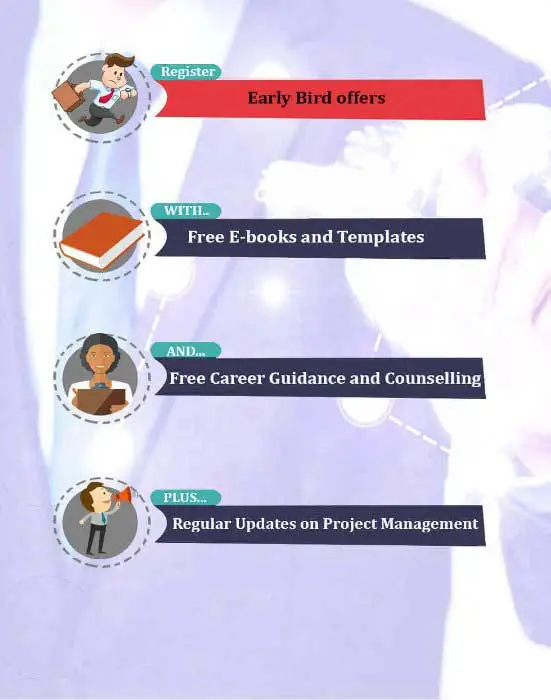
Project management organizations must become aware of the hidden costs of this assumption and the significant risk generated when this assumption proves incorrect in order to enhance the number of successful projects.
Why PMP Agile?
When more traditional methods of PMP certification are no longer viable, Agile PMP can provide a framework for the successful completion of a project. Agile PMP provides a framework for maximum value in uncertain problem domains, such as those in which high quality and speed to market are your core business motivations.
For an organization to maintain its competitive edge in the face of growing levels of unpredictability and the growing significance of optimal market timing in satisfying customer expectations, it must be able to make rapid adjustments.
Organizations must demonstrate greater business agility the more likely it is that the needs may undergo changes. To be responsive, organizations need to take a new approach to managing their project portfolios and adopt a more adaptable project management style. Traditional frameworks that demand early commitment from stakeholders on requirements are doomed to fail in an environment of constant change.
Businesses that deliver projects in fast-paced and uncertain markets should rely less on project management strategies that place emphasis on large-scale predictive up-front planning. These types of initiatives have a prohibitively expensive cost for change management, and the methodologies used limit businesses’ ability to adapt in response to shifting customer requirements.
The software industry needs an alternative strategy to recognize uncertainty and adapt to change efficiently and successfully. Agile PMP builds a framework that enables stakeholders to offer the highest customer value possible while adhering to the established time and financial limits.
What is Agile PMP?
Agile PMP is predicated on the idea that software development projects cannot be accurately predicted. Uncertainty in the market is going to be the driving force behind change. The greater the degree to which we need clarity regarding our projects, the more the organization needs to make plans to be flexible. Because of the unpredictability of the market, the requirements will likely need to be modified throughout the project.
Requirements due to uncertainty, the scope is an inappropriate starting point for measuring the project’s performance characteristics. Instead of beginning the process of developing a schedule by evaluating the project’s scope, the stakeholders in the project evaluated the amount of time and money they are to be invested to get a product to market. On agile projects, time and money are raised to the role of primary drivers, and they are frequently established before the project’s scope is defined.
The requirements for an agile project are expressed as thin vertical slices of the entire system. Additionally, they are built to be independent and can have their priorities rearranged and implemented in any sequence. It is essential to write requirements in this way to accommodate changes in scope while causing the project team as little disruption as possible. Agile teams start by measuring how quickly they can finish narrow vertical slices of functionality and, as a result, understand how much of the requirements can be achieved within the project’s parameters.
Achieving a Balance Despite the Triple Constraints
There is a reciprocal link between time, money, and scope factors. If one of these three variables on a project is altered, there will inevitably be a corresponding change in one (or more than one) of the other two variables. The central role of the project manager is to investigate and oversee the management of the interactions between these three variables.
Defining the project’s scope is the first step in the typical project management process. The project manager conducts interviews with the stakeholders and records the features offered as the project’s part. This is the initial stage in defining what kind of result for the project would be considered satisfactory. In a software development project, you typically document the scope at several levels of detail, including the project charter, a project definition document, a market requirements document, and sometimes a product requirements document.
The project’s total cost includes all expenditures made on capital, all expenses incurred by contractors, and all internal labor costs. Project managers are responsible for keeping track of project expenses concerning the agreed budget for the project. Staying within the allotted budget for the actual project expenditures and carrying out the planned expenses at the appropriate points in the project’s timeline are both essential.
Within the project schedule, the project manager will monitor the time spent. The schedule identifies who is in charge of completing each project deliverable as well as the deadlines for those tasks. Keeping track of the physical percentage that has been completed and calculating Earned Value using the project schedule, which describes the order in which the deliverables and project dependencies will be completed, is helpful. The project schedule is frequently the most important means of conveying information about the current condition of the project.
Attempts to Reduce the Impact of Uncertainty
Agile teams routinely provide working software to the project stakeholders to reduce the risk associated with uncertainty. The project’s stakeholders can inspect the outputs and have the power to alter the requirements at any time, modify the project’s direction, or cancel it altogether based on what they have learned about the product as it develops.
The agile methodology is based on empirical process control.
Classifying inputs and outputs and specifying controls that keep them within limits creates empirical process models.
The models can use to predict the behavior of the empirical processes. Empirical process modeling constructs a process model solely from empirically gathered input/output data. There is no reference to any laws governing the essential nature and attributes of the system during this process. Having prior information about the procedure is unnecessary, although having such knowledge can be helpful because a system is generally viewed like a black box.
Agile organizations produce working software in tiny increments, maintain high product visibility, and conduct frequent inspections of the results. Agile project managers concentrate on making incremental improvements to the developing product. Along with the requirements of the developing product, and the procedures that the performing organization employs to produce software.
How Agile Project Managers Should Measure Their Progress?
Agile project managers prioritize backlog size and velocity as the primary relevancy.
The product backlog is the list of things that need to be done for an agile project. The project team ranks the collection of features according to their readiness to be built. Backlog item estimates can be provided in terms of ideal days, ideal hours, or even more story points. You can calculate the entire backlog size by adding up all of these estimations, regardless of the unit.
The amount of backlog that the team was able to deliver in a particular iteration is what the term project velocity refers to. The team’s velocity represents the rate at which they can clear out the backlog, and it can be measured at any consistent time interval. You can interchangeably use velocity with throughput (output). We use the following formula to compute the amount of time remaining.
Intervals to Complete = Backlog Size / Estimate Per Interval
What are the Objects of the Exercise for PMP Agile training?
There are five questions that all Agile project managers must address.
- What is the expected completion date for the project?
- What will be the anticipated cost of the project?
- Does the organization agree with what the project “done” looks like?
- What risks do delays in meeting our deadlines and financial constraints pose?
- How to alleviate the damage that might be done?
Agile project managers can consider themselves successful after collaborating with the executing organization to provide the maximum amount of scope. We do this to satisfy the project sponsors within the time and cost limits imposed by the business.
The project’s stakeholders and the company carrying out the job must establish a solid base of commitment and confidence.
Working together regularly is necessary for the success of this strategy. Agile project managers focus more on delivering value to the business than on creating detailed plans for individual projects. Agile project managers emphasize collaboration with the company and the team’s servant leadership.
Presently Undergoing a Change
1. Strategies under Agile PMP training
Conventional PMP-certified people generally produce Project Management Plans. The PMBOK Guide’s project management process groups, explain project management in detail. The PMBOK Guide’s Knowledge Areas also known as Performance Domains now, can explain much of agile project management in a more conventional way.
2. Deliverables with Specific Functionality
Conventional project managers frequently make the mistake of keeping track of activities in the project plan rather than real results. Hence, project managers should develop plans that focus on features rather than activities if they use agile planning concepts too. Using more traditional forecasting methods, project managers can specify which features are needed in the system.
3. Planning in Cycles
Before a project begins, the company may demand that the manager hand up a comprehensive Gantt chart. Project managers may carry out iterative cycles of meticulous planning by having everyone on one page and verifying the timeline’s accuracy. We update and manage traditional plans by using data collected in iterative planning sessions.
4. Stand-up Meetings on a daily basis
Both traditional project teams and agile project teams have traditionally relied on daily meetings. However,
Thanks to these daily check-ins, the project manager has greater transparency into the status of deliverables and the team’s progress. Teamwork, communication, and individual responsibility for the project’s success can all be encouraged through regular meetings like these.
Conclusion
There needs to be more clarity around many modern undertakings. Whereas, excellent quality and speed to market are critical success factors, agile project management can provide optimum output. Traditional approaches to project management may not always yield the best results, while agile as well as waterfall methodologies often do evidently so, if you’re wondering which is better, Agile or Waterfall Methodologies, then read through ProThoughts’ blogs, and we assure you you will find a lot of your questions answered!



